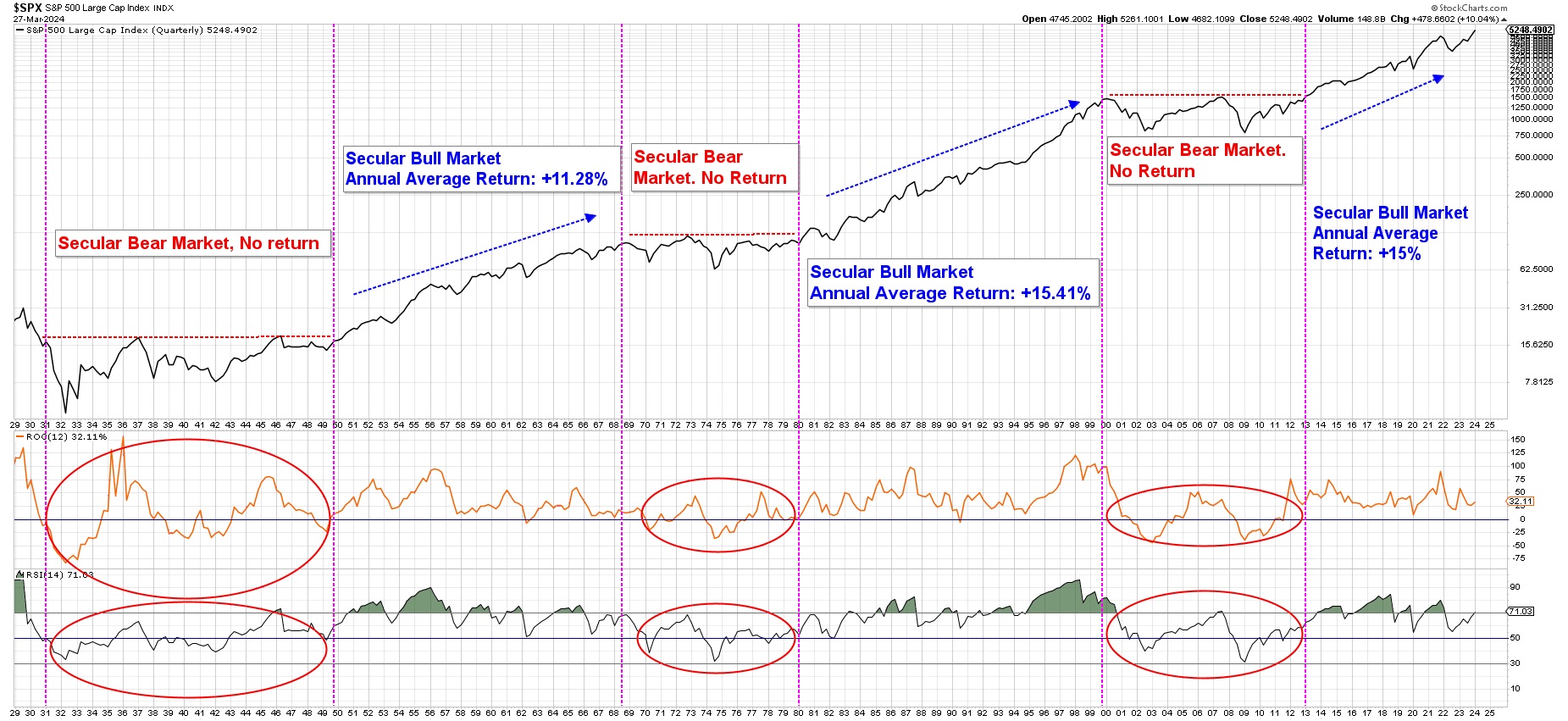We are Still in a Secular Bear Market
Igor Manukhov - Mar 29, 2024
We are still in a secular bull market. Enjoy the ride.
The market made a phenomenal comeback from the 2022 bear market low. As it climbs higher, more and more people question how far it will go. While reviewing my charts this week, I came across a 100-year history of the S&P 500. It reminded me once again how important it is to maintain a long-term perspective. Just look at it—it practically screams to hang on and enjoy the ride up.
Of course, it's not so easy. Over the last 100 years (including the current one), there have been three secular bull markets and two secular bear markets. I've separated each of them with vertical lines.
Secular Bull Market: During these periods, everything goes up. Investing is fun, easy, and profitable. It's a buy-and-hold paradise that often provides double-digit annual returns to investors over a very long time.
Secular Bear Market: Investing during these times feels like hell. The market lacks clear direction, experiences volatility (resulting in short-term losses), and offers minimal gains. Buy-and-hold strategies get decimated. People who've weathered secular bear markets often swear never to touch stocks again.
Identifying the type of market we're in at any given time is the most useful activity, in my opinion. What works in a secular bear market won't fare well in a bull market, and vice versa. It's akin to knowing the difference between winter and summer—choosing the right "tires" for the market conditions.
The good news? We're still in a secular bull market. Therefore, all market corrections (like those in 2018, 2020, and 2022) should be treated as buying opportunities until proven otherwise. I rely on two momentum-based indicators to determine our market status:
1. 12-Quarter Rate of Change (ROC) (orange line in the middle): During secular bull markets, the 14-quarter market return (3 years) never goes fully negative. In contrast, during secular bear markets, it dips below zero and remains there for extended periods.
2. 12-Quarter Relative Strength Index (RSI): RSI is a versatile indicator. By using its daily charts, I avoid buying during overbought markets (RSI above 70) and selling into oversold markets (RSI below 30). On quarterly charts, an RSI below 50 marks the start of a secular bear market. Until then, the market should be treated as a secular bull.
As you can see in the charts below, we're still in a secular bear market until proven otherwise. Take advantage of any market dips along the way. The chart indicates (black line) that it's likely a great time to put money to work.
